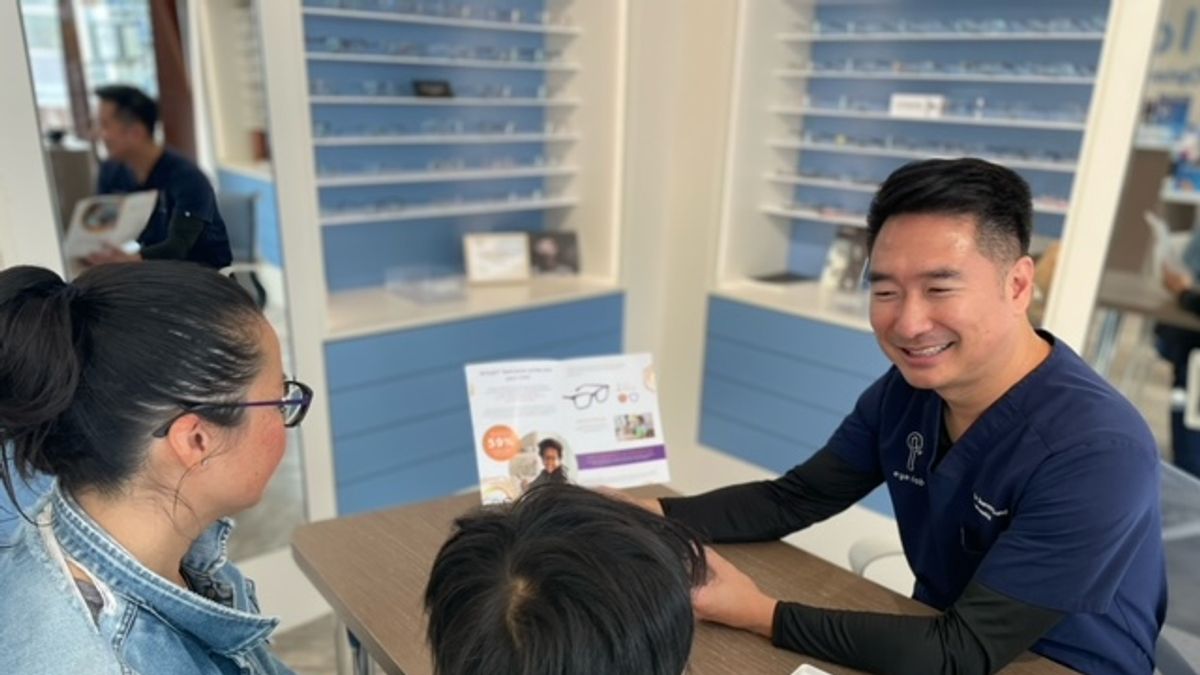Clinical
The SightGlass DOT Lens - Q&A with Dr Sherman Tung

Sponsored by
In this article:
Our new Q&A format is designed to explore a particular clinical topic, intervention, product or research paper with an expert. Here, we talk to Canadian Optometrist Dr Sherman Tung about his experience using the new SightGlass Vision DOT (Diffusion Optics Technology) 0.2 spectacle lenses in his practice for myopia management.
SightGlass Vision DOT 0.2 lenses have been investigated in a randomized clinical trial of children aged 6 to less than 10 years, with interim 12-month data recently published. The results showed that children wearing the test lens had 0.15mm axial length growth in a year, compared to 0.30mm in the control group, representing a 50% reduction. For children aged 6-7 years, refractive progression was -0.19D in a year in the test lens compared to -0.75D in the control group.1
This age group tends to show some of the fastest myopia progression,2,3 and this is the first data set available on effective myopia control spectacle lenses for these younger children.
Dr Tung makes an important point here about wearing time. It has been shown in other spectacle and contact lens studies that increased wearing time leads to better myopia control results. In the CYPRESS study,1 recommended wearing time was an average of at least 10 hours per day, every day.
Around 20% of children removed their glasses for near vision activities, these primarily being reading and writing. The authors cited that removal of spectacles for reading could have had an influence on efficacy of the glasses. The International Myopia Institute Clinical Management Guidelines recommend that children wear their myopia correction and treatment full time.4
Diffusion Optics Technology (DOT) 0.2 lenses are designed to reduce contrast signalling in the retina to slow myopia progression, providing clear central vision with a slightly less contrast in the 'peripheral' component of the lens. The clear central portion is useful for fine detail and also aids the practitioner to measure the lens power. As Dr Tung describes, this does not appear to impact visual function or lifestyle in wearers.
You can read more about the design and research outcomes of the DOT lens in the recently published one year randomized controlled trial.1 More Myopia Profile resources and Science Summaries on this data are found via the links at the end of this article.
The image above shows a child wearing the SightGlass Vision DOT 0.2 lenses, which are available in Canada and outside the US, showing the aesthetic appearance of the lens seen on the child's face.
Whilst this technology is in its early stages, a 12-month interim analysis from this ongoing trial - Control of Myopia Using Peripheral Diffusion Lenses Efficacy and Safety Study (CYPRESS)1 has demonstrated the safety and efficacy of the DOT 0.2 spectacles for reducing myopic progression. The 3-year clinical trial has been completed and reported at the recent American Academy of Optometry meeting in San Diego. The extension study is ongoing to ultimately report on axial length and refractive control data beyond three years.5
Further reading
Important note: DOT lenses are currently not available in the US but are available in selected countries outside the US.
Meet the Authors:
About Dr Sherman Tung
Dr. Sherman Tung is based in Vancouver at Eyelab, which is a unique and creative OD practice specializing in Myopia Management and Vision Therapy. His passion and dedication for myopia management led him to pursue a fellowship in both the FAAO and FIAOMC. He was honored to be named BC Optometrist of the Year in 2019, the highest award given to an optometrist who has not only contributed to the advancement of optometry, but has also demonstrated a fervent commitment to serving the community and improving the visual welfare of the public.
This content is brought to you thanks to an educational grant from
References
- Rappon J, Chung C, Young G, Hunt C, Neitz J, Neitz M, Chalberg T. Control of myopia using diffusion optics spectacle lenses: 12-month results of a randomised controlled, efficacy and safety study (CYPRESS). Br J Ophthalmol. 2022 Sep 1. (link)
- Tricard D, Marillet S, Ingrand P, Bullimore MA, Bourne RRA, Leveziel N. Progression of myopia in children and teenagers: a nationwide longitudinal study. Br J Ophthalmol. 2021 Mar 12:bjophthalmol-2020-318256. (link) [Link to Myopia Profile Science Summary]
- Donovan L, Sankaridurg P, Ho A, Naduvilath T, Smith EL 3rd, Holden BA. Myopia progression rates in urban children wearing single-vision spectacles. Optom Vis Sci. 2012 Jan;89(1):27-32. (link)
- Gifford KL, Richdale K, Kang P, Aller TA, Lam CS, Liu YM, Michaud L, Mulder J, Orr JB, Rose KA, Saunders KJ, Seidel D, Tideman JWL, Sankaridurg P. IMI - Clinical Management Guidelines Report. Invest Ophthalmol Vis Sci. 2019 Feb 28;60(3):M184-M203. (link)
- SightGlass Vision I. Control of Myopia Using Novel Spectacle Lens Designs (CYPRESS) https://clinicaltrials. gov/ct2/show/NCT03623074. NIHUS National Library of Medicine Clinical Trials. gov. 2020. (link)
Enormous thanks to our visionary sponsors
Myopia Profile’s growth into a world leading platform has been made possible through the support of our visionary sponsors, who share our mission to improve children’s vision care worldwide. Click on their logos to learn about how these companies are innovating and developing resources with us to support you in managing your patients with myopia.











